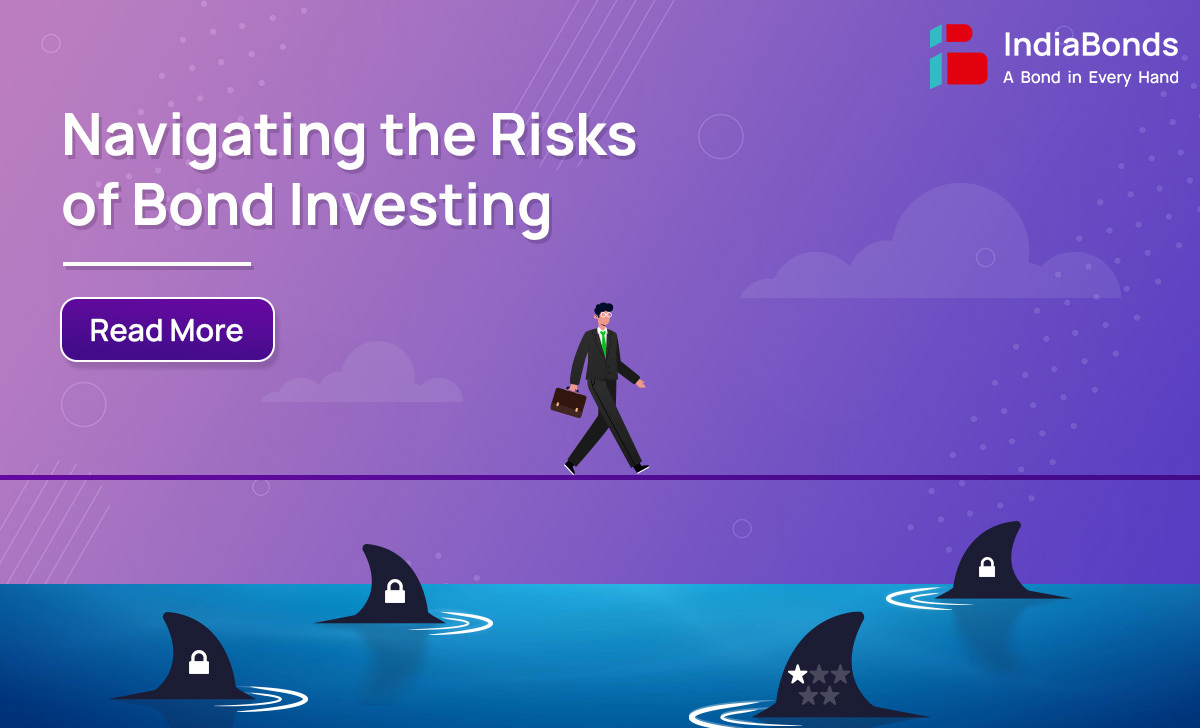
Mr. Mahesh had always been wary of bond investing. He had heard stories of investors losing money in bond investments because the company defaulted, and the thought of taking such risks made him very anxious. For years, he avoided any investment opportunity that involved bonds, even though his financial advisor tried to explain the benefits of diversifying his portfolio with fixed-income investments. One day, he came across a great opportunity to invest in a bond issued by a well-established company. The bond had a high yield and a solid credit rating, which meant that the investment was relatively safe. However, Mr. Mahesh was still hesitant and decided not to invest. Several months after, the RBI reduced interest rates, causing a surge in bond prices. Mr. Mahesh watched with regret as his friends who had invested in the same bond celebrated their profits. He realized that he had missed a great opportunity because of his fear of taking risks.
A bond is a fixed-income security representing a loan from an investor to a borrower, with a fixed interest rate and a promise to pay back the principal amount at maturity. Investing in bonds can diversify a portfolio and generate income, but it’s crucial to understand the bond investment risks, including the potential for default, inflation, market fluctuations, etc. Hence, investors must contemplate what are the risks associated with investment in bonds and assess whether the potential returns align with their investment objectives and risk tolerance.
Interest rate risk is a type of risk associated with bond investing that arises from the possibility that changes in interest rates may impact the value of the bond. Bond prices decrease when interest rates increase and conversely, bond prices increase when interest rates decrease. For example, suppose you buy a bond with a fixed coupon rate of 10% per year for 5 years. If the repo rate hikes to 50 bps during that time, new bonds with a higher coupon rate would be more attractive to investors, and the value of your bond may decrease. Bonds with longer maturities typically have greater interest rate risk than bonds with shorter maturities. One can hedge against this by having floating rate bonds in their portfolio which pay higher coupons when rates rise.
The possibility that the issuer of the bond may default on its debt obligations or become insolvent is known as credit risk. When an issuer defaults on its debt obligations, it may not be able to repay the principal amount of the bond, causing a loss of principal for the bondholder. Credit risk is typically assessed by credit rating agencies, which assign credit ratings to bond issuers based on their creditworthiness. Bonds issued by issuers with lower credit ratings are generally considered to have higher credit risk, as these issuers may be more likely to default on their debt obligations. Investors can manage credit risk by diversifying their bond investments across different issuers and industries, and by selecting bonds with credit ratings that match their risk tolerance. Also important that as most bonds are secured, investors can still recover some of their principal back as recovery in case of default.




Inflation affects the purchasing power of an investor’s returns. It erodes the value of money over time, causing the cost of goods and services to increase. This can have a significant impact on bond investments because the fixed rate of interest paid by bonds may not keep up with inflation. For example, if you invest in a bond that pays a fixed rate of 8% per year and inflation is at 9% per year, the real value of your returns will decrease by 1% each year. This means that while the nominal value of the bond may remain constant, the actual purchasing power of the returns will decrease over time. To mitigate inflation risk, investors may consider investing in floating rate bonds or inflation-indexed bonds. These bonds are designed to adjust their interest payments and principal value in line with inflation and change in interest rates, helping to maintain the purchasing power of the returns.
Liquidity risk in bond investing refers to the risk that an investor may be unable to buy or sell a bond at a desired price due to a lack of market activity or depth. This can result in difficulty or delay in converting the bond to cash or incurring a loss if the bond must be sold quickly. Liquidity risk can be affected by factors such as the trading volume of a particular bond, the size of the bond issue, credit rating and the overall demand for the bond in the market. For example, a bond issued by a smaller company or with a less frequent trading volume may be more difficult to sell than a bond issued by a larger company with a more active market.
Reinvestment risk is the risk that the cash flows from a bond investment will be reinvested at a lower rate of return than the original investment. The risk arises from the fact that when a bond matures or pays off, the investor must then reinvest the proceeds at the prevailing market interest rates, which may be higher or lower than the rate on the original bond. If interest rates have fallen since the original bond was purchased, the investor may have to reinvest the proceeds at a lower rate, resulting in a lower overall return on investment. Reinvestment risk is particularly relevant for bonds with longer maturities, as the potential for interest rate changes is greater over a longer time horizon. To mitigate this risk, investors may consider diversifying their bond portfolio across different maturities and issuers.
Bonds have always been a go-to option for people who are looking for predictable cash flows. To know more about the benefits of investing in bonds, click here.
Risks are a part of life, and avoiding them altogether can sometimes lead to missed opportunities. Whether it’s investing in the financial markets, trying a new hobby, or even just crossing a street, there’s always a risk involved. However, we shouldn’t let our fear of risks prevent us from living our lives to the fullest. Instead, we should educate ourselves, take calculated risks, and learn from our experiences, both good and bad. Therefore, to understand ‘what is the risk of investing in bonds’, investors should educate themselves and carefully evaluate bond risks to make informed decisions when investing in bonds.
A: Investors can manage these risks by diversifying their bond portfolio, choosing bonds with higher credit ratings, keeping the bond’s duration in mind, and being aware of the macroeconomic factors that can impact the bond market. Additionally, investors can consider using an online bond platform like IndiaBonds to help understand and manage these risks.
A: Bond investing provides regular income through interest payments, and bonds are generally considered to be less risky than stocks. Bonds can also diversify a portfolio, reduce volatility, and provide a hedge against inflation.
Disclaimer: Investments in debt securities/ municipal debt securities/ securitised debt instruments are subject to risks including delay and/ or default in payment. Read all the offer related documents carefully.